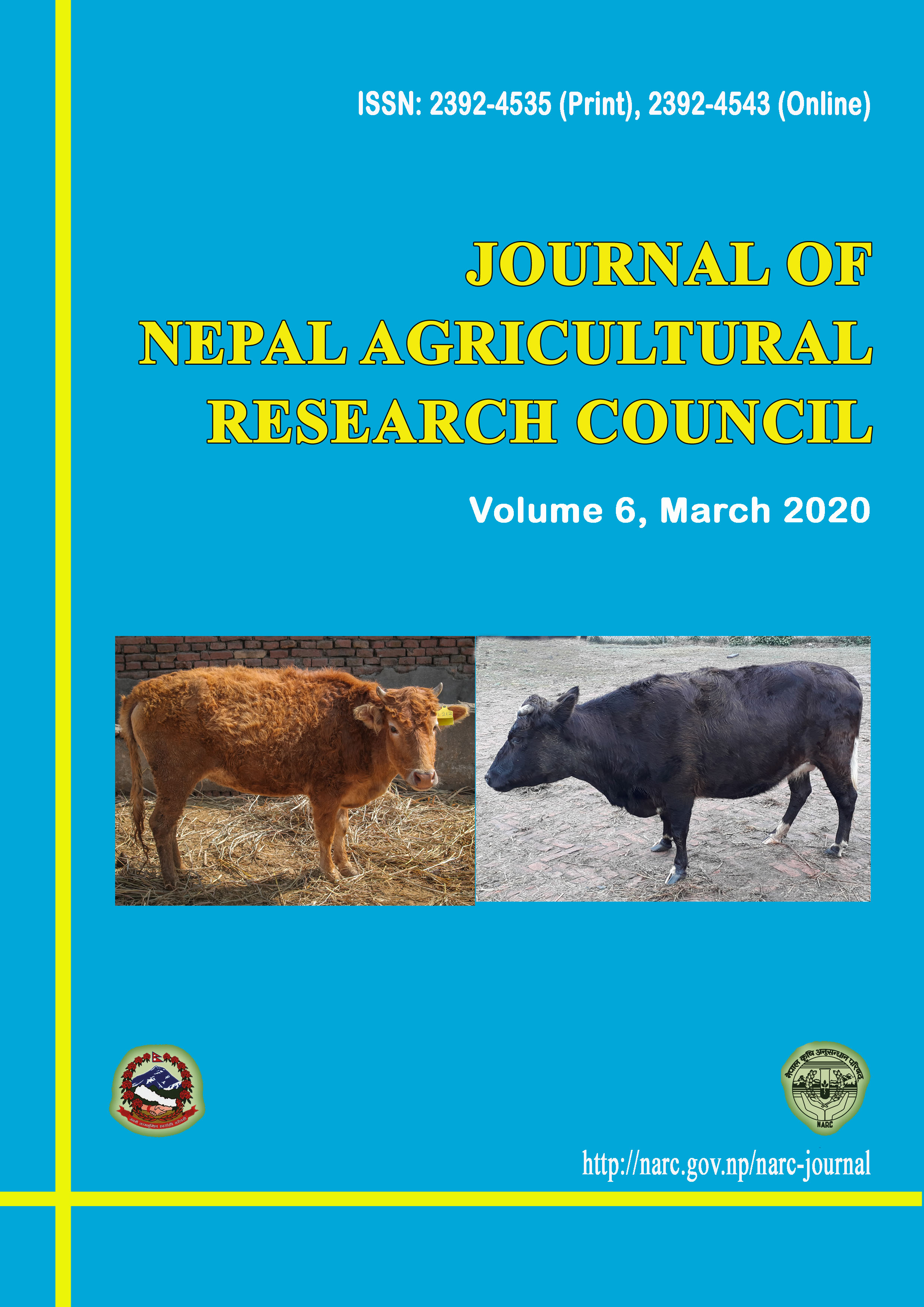Lateness Gene Concerning Photosensitivity Increases Yield, by Applying Low to High Levels of Fertilization, in Rice, a Preliminary Report
DOI:
https://doi.org/10.3126/jnarc.v6i0.28125Keywords:
Heading time, lateness gene, photosensitivity, yield, yield components. rice, breedingAbstract
Various genes controlling heading time have been reported in rice. An isogenic-line pair of late and early lines “L” and “E” were developed from progenies of the F1 of Suweon 258 × an isogenic line of IR36 carrying Ur1 gene. The lateness gene for photosensitivity that causes the difference between L and E was tentatively designated as “Ex(t)”, although its chromosomal location is unknown. The present study was conducted to examine the effects of Ex(t) on yield and related traits in a paddy field in two years. Chemical fertilizers containing N, P2O5 and K2O were applied at the nitrogen levels of 4.00, 9.00 and 18.00 g/m2 in total, being denoted by "N4", "N9" and "N18", respectively, in 2014. L was later in 80%-heading by 18 or 19 days than E. Regarding total brown rice yield (g/m2), L and E were 635 and 577, 606 and 548, and 590 and 501, respectively, at N18, N9 and N4, indicating that Ex(t) increased this trait by 10 to 18%. Ex(t) increased yield of brown rice with thickness above 1.5mm (g/m2), by 9 to 15%. Ex(t) increased spikelet number per panicle by 16 to 22% and spikelet number per m2 by 11 to 18%. Thousand-grain weight (g) was 2 to 4% lower in L than in E. L was not significantly different from E in ripened-grain percentage. Hence, Ex(t) increased yield by increasing spikelet number per panicle. It is suggested that Ex(t) could be utilized to develop high yielding varieties for warmer districts of the temperate zone.
Downloads
Downloads
Published
How to Cite
Issue
Section
License
This license enables reusers to distribute, remix, adapt, and build upon the material in any medium or format for noncommercial purposes only, and only so long as attribution is given to the creator.

